There may be no greater sense of accomplishment in whitetail hunting than connecting on a mature buck on your first time in an area. It requires hours of studying maps, learning an area, finding specific deer, the right wind, stealth, and a plethora of other factors for it all to come together on a virgin sit.
Hang and hunt whitetail hunting has recently been made more widely popular across the nation, not only for the challenge but also for the involvement and excitement of the hunt. The unknown aspect can be a refreshing change of pace from the ‘safe’ sits on food sources, pinch points, or the same stand you’ve sat in dozens of times before. In this article, we are going to walk through the process and different styles of mobile strategies from a number of onX Hunt partners who consistently find mature bucks from unfamiliar trees. Don’t forget, as an onX Elite Member, you have exclusive access to discounts from Lone Wolf Custom Gear and The Hunting Public to help you up-level your mobile hunting.
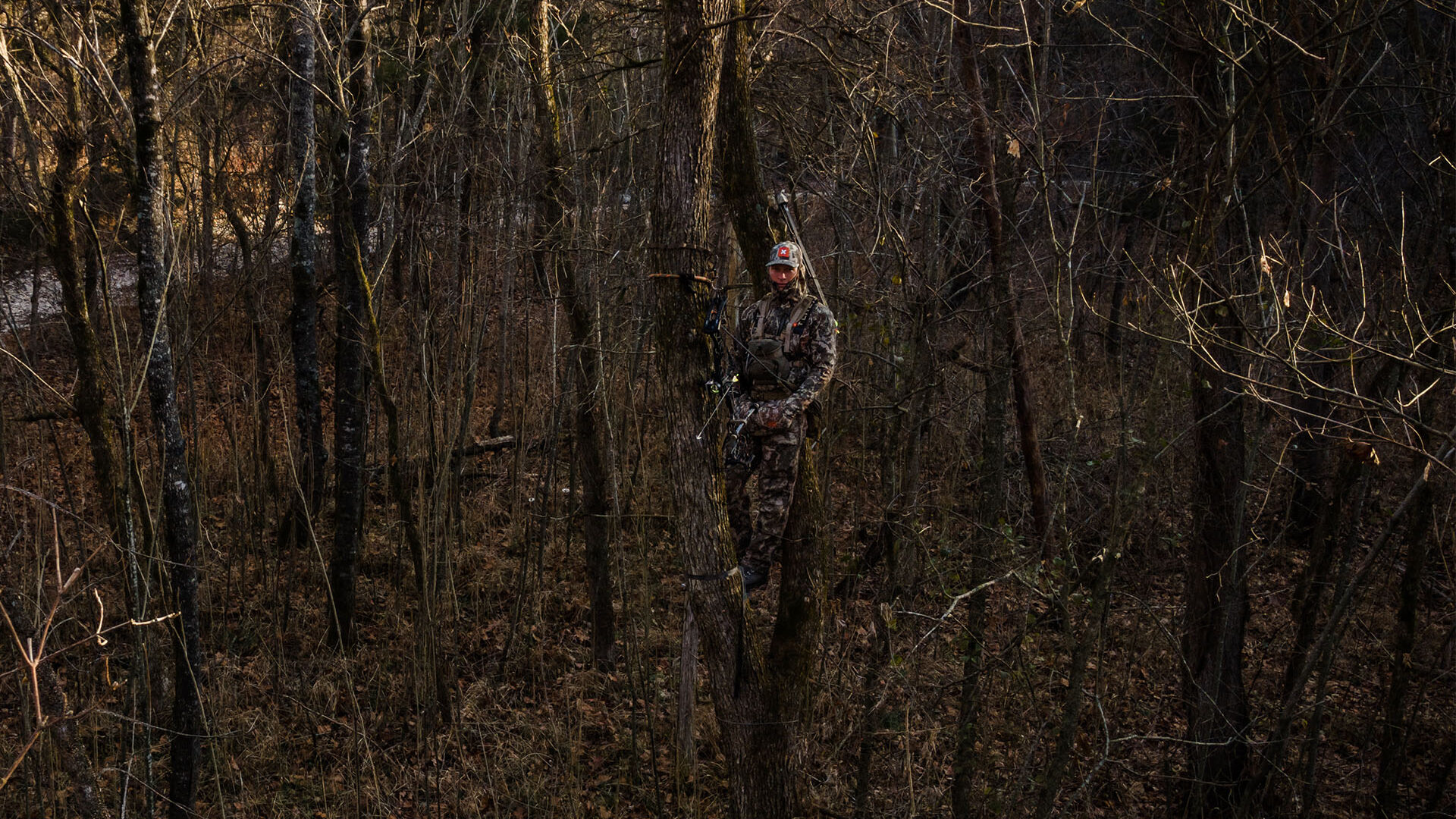
Finding the Tree
Often, this is the most difficult aspect of a shot opportunity coming together. Many times, you end up just out of range or with unforeseen obstacles that you didn’t see in the dark obstructing your shot. This makes your preparation imperative, so we wanted to explore how some of the most seasoned whitetail hunters we know go about this process.
Question:
Break down a hang and hunt scenario that breaks down looking for the exact tree, whether boots on the ground or via onX Hunt. Get specific as far as when and why you are keying in on what you are keying in on?
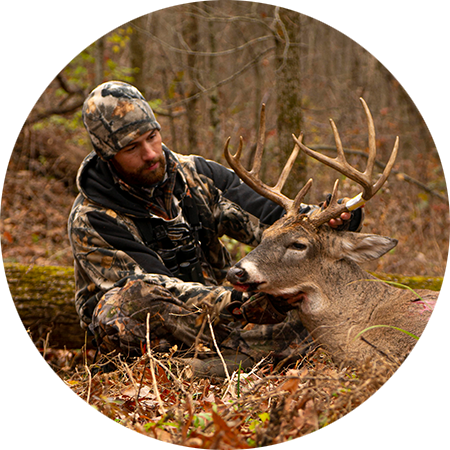
The Hunting Public’s Aaron Warbritton
“We’ll start by choosing an area of interest from the map. That’s likely either a thick bedding area that we believe is overlooked or in a remote location. Then, we’ll go in boots on the ground (ideally a month or more before we plan to hunt) and scout the entirety of the area from the inside out. Choosing the ideal setup is different in each situation. We’re trying to put the deer “on a spot” when scouting.
This could mean a scrape where two trails intersect or anticipated movement down an exit trail heading toward a food source. Then, we take the anticipated path of the deer and look for ambush locations where we can remain hidden but close enough to get a high odds shot opportunity. We don’t care if there’s a great looking tree for a stand 60 yards away. That’s too far for us. We’d rather try to anticipate where the deer is going to walk and find a setup along that route where we can get within 30 yards for a shot.”
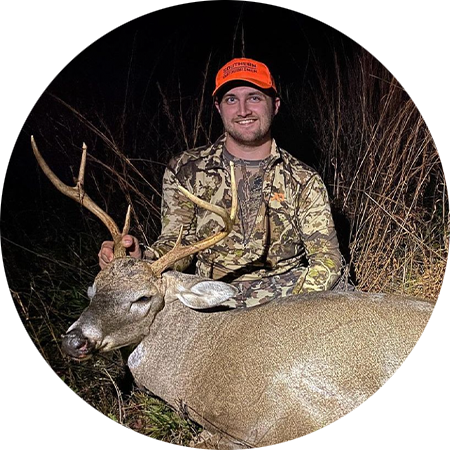
The Southern Outdoorsmen’s Andrew Maxwell
“One of our classic “hang and hunts” here in the South is moving in on thick nasty cover during the rut and finding a vantage point above it for a rifle hunt. I like to start by getting on onXHunt and looking for a cutover that’s between three and six years old. A cutover of that age here in central Alabama will be thick enough that it is impossible to see into from the ground and will be bursting at the seams with great cover and food. These are identifiable with the Hunt App’s aerial imagery by looking closely at the cutover—you should start seeing pine saplings emerging, but there should be plenty of space between them. If you only see pine saplings with little or no gaps between them, the cutover is too old. You need sunlight reaching the ground between the saplings to create that dense, viney briar thicket that deer love to spend all hours of the day in. Next, I’ll look at the perimeter of the cut on my Hybrid Basemap. The goal is finding the right tree in the right spot that will allow me to get high above the thicket so I can see and shoot down into it. I use the Hybrid Basemap so I can view the topo lines to find the highest spot with climbable trees. With that spot located, it’s time to put boots on the ground. If I am lucky enough to find a pine tree with few limbs, I will use a climber and get as high in the tree as I possibly can. If the tree has large limbs that make it impossible to use a climber, I will switch to a saddle and get as high as possible.”
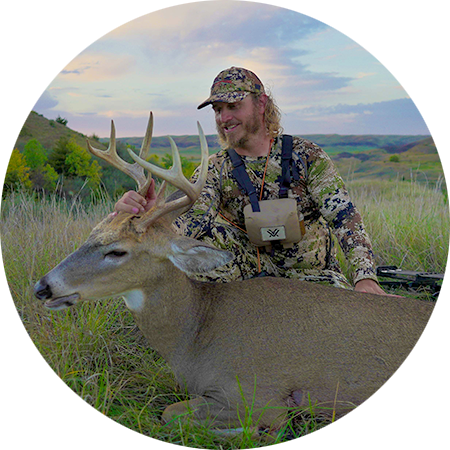
The Element’s KC Smith
“The Hunt App is what kills me deer. All year long, I’m spending time dropping pins and evaluating areas. I’m picking specific trees for October in South Dakota or Wyoming while sweating it out in the Texas summer. I’ll work through a process of elimination after I scatter pins all over. By the time season gets here, I’ll have it narrowed down to a short list of highly probable spots for different wind directions. What I really like to see on a map is a deer trail that crosses a fence (that way you know it isn’t cows) to get to a food source. If it’s remote, even better. That’s the great part about the detail in the aerial maps, the Optimal Wind setting on Waypoints, and the Crop Data Layer. It is bad to the bone when you can confidently hike in a mile or two to a place you’ve never been, with a tree or ambush point picked out as a destination, then have a buck walk by in range on the first time in.”
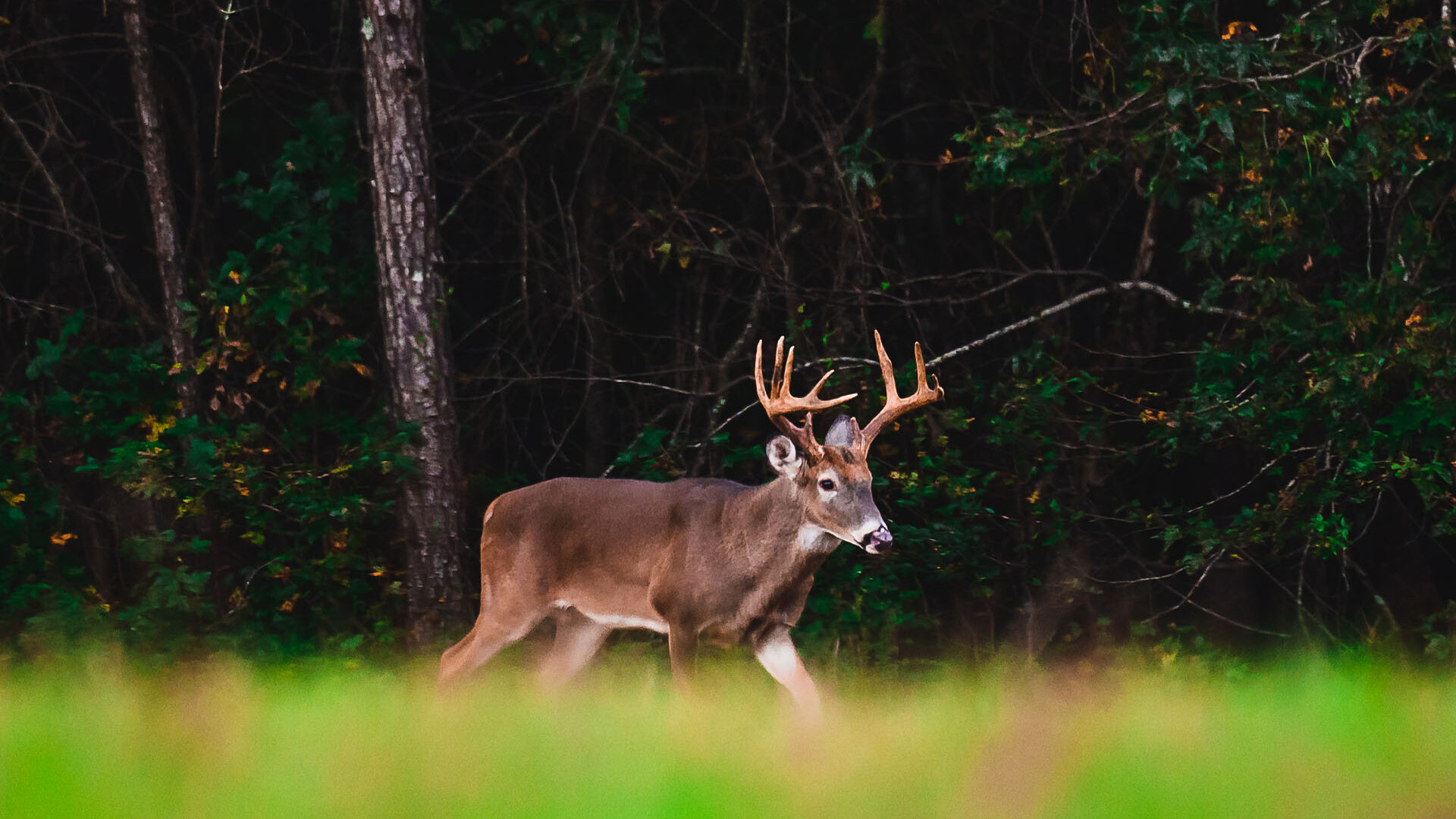
Understanding the Usage of Your X
When you’ve found a particular buck to hunt and have honed in on his core area, making the correct move can be extremely difficult. Between not wanting to bump him out of the area, playing the wind and weather conditions, daylight activity, and more, the opportunities for mistakes are nearly endless. We wanted to know how you can apply more mobile hunting tactics to create solutions for this exact situation.
Question:
When you have a particular buck you’re hunting, how are you monitoring that deer as the seasons change and at what point do you make the move to hunt him? Are you using trail cameras, basing decisions solely on the weather, conducting observation sits, or studying maps and finding overlooked areas? Essentially, what are some factors / strategies you use to hone in on a mature buck when it comes to mobile hunting?
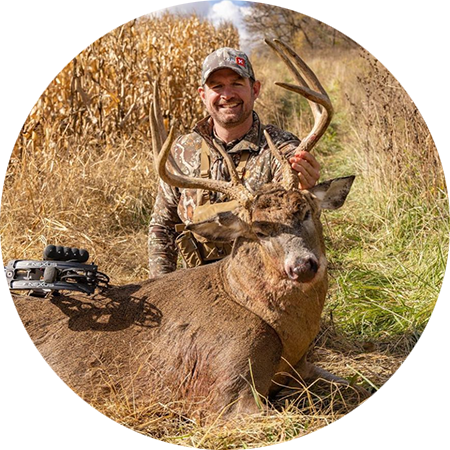
Wired to Hunt’s Tony Peterson
“When I make the decision to move right in on a buck, it’s almost always because he has given me a reason to. If I see him take a certain trail, make a rub on a bench, or basically show me a little glimpse of his day-to-day life, I’ll move right on top of that as soon as I can. Usually, that means it’s the next day, and I really don’t care what the weather conditions, moon phase, or anything else look like. I just want to get on top of his current movement immediately. This is partially because they often do the same thing two days in a row and partially because I’m usually hunting pressured ground where someone else is bound to move in and mess things up. Because of that, I don’t hesitate to move in as long as the deer have given me some kind of reason to do so.”
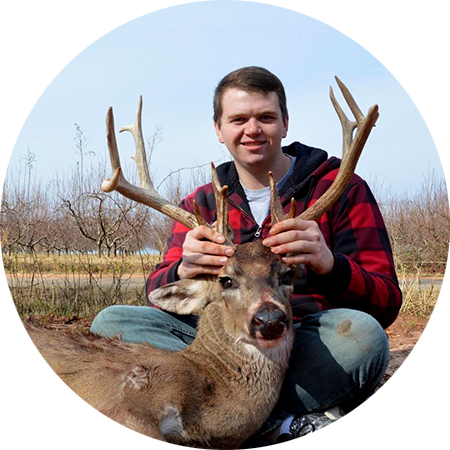
Have Bow, Will Travel’s Tanner Edenfield
“Cameras are my number one strategy to monitor a particular deer. Here in the South, it’s so thick that observation sits are virtually impossible. My main goal is to use cameras to get pictures of him close to daylight and then backtrack from there to determine where I think he may be bedding. Once I have an idea of where he may be bedding, I focus cameras on bait or scrapes along rub lines leaving the area he’s bedding. I generally do not hunt him until I have him figured out enough to be regularly getting daylight pictures of him. The first couple hunts are always your best chance, and I want to be in the right spot for those first couple of sits. However, there are exceptions. Some of the best hunts I’ve had have been following a hunch and going in blind with a stand on my back when I knew the general area a deer was bedding.”
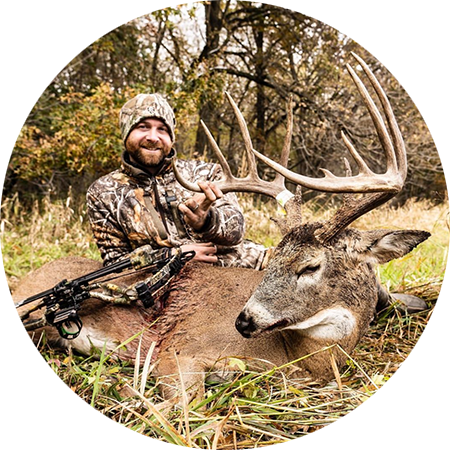
Midwest Whitetail’s Jared Mills
“Anytime I’m targeting a specific buck, I’m using a variety of tools to increase my chances of catching up to him. Trail cams, maps, historical knowledge, and time in the field are all in the arsenal. They all work together and can vary in importance depending on the deer, the property, and several other factors. This is where the mobile hunting strategy really shines. It gives you the opportunity to capitalize on that intel instead of waiting back. In my experience, the less mobile and aggressive I am, the more I’m relying on luck. And we all know there’s enough luck involved the way it is. So every season and every hunt for me is a constant process of gathering information, studying maps, and figuring out where I need to be on any given day. I treat each time out as a learning opportunity to be able to adjust on the next hunt.”
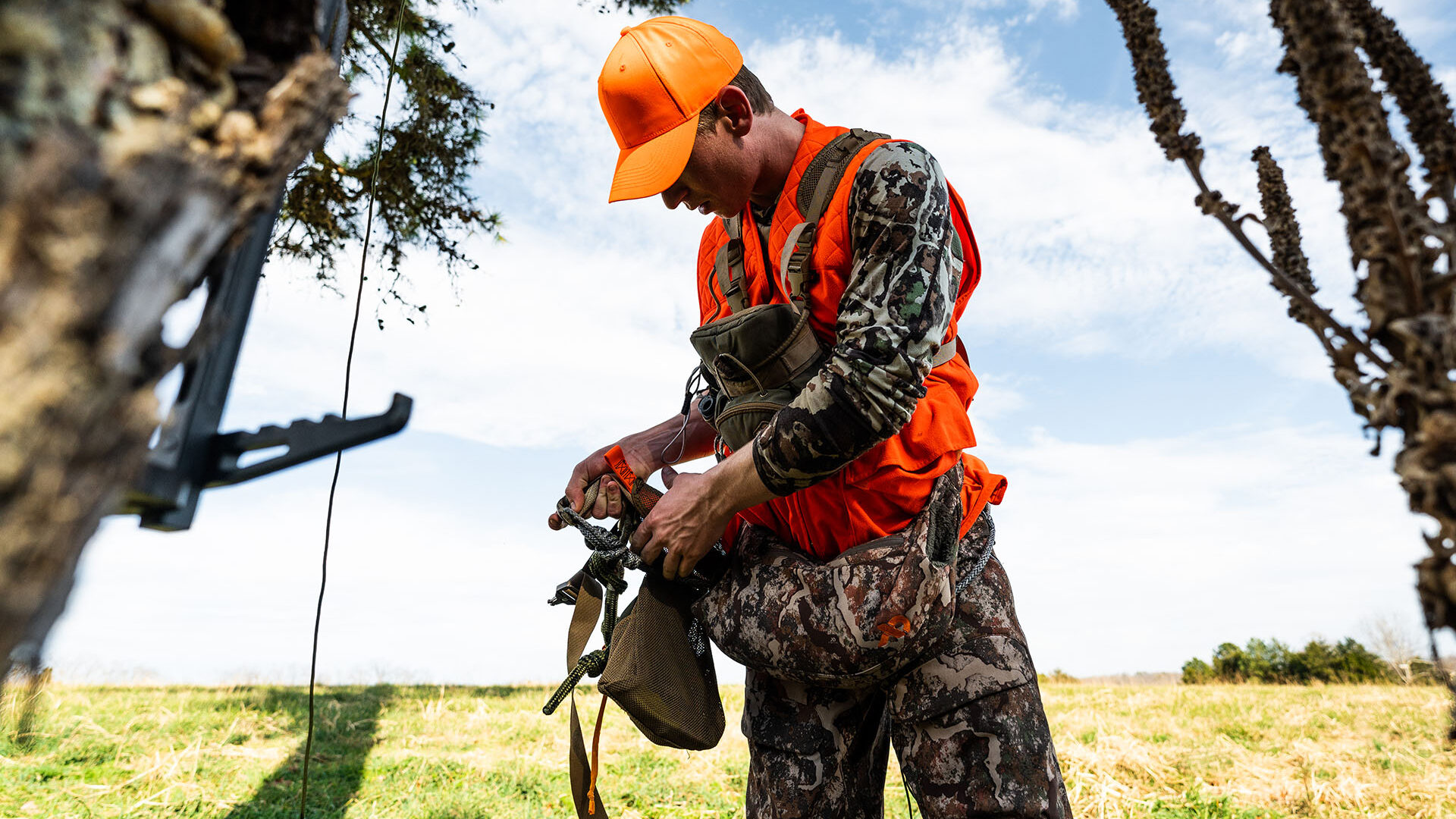
Mobile Strategies
Every hunt has its own unique nuances, and the next few questions hone in on different scenarios, such as whether the time of year influences the amount they hang and hunt, how hunting on public vs. private ground affects their approach, and ways they leverage tools, including the Hunt App and trail cameras, to make the season one to remember.
Question:
When are you most likely to hang and hunt? For example, is it during the rut keying in on doe bedding, early season moving in on a habitual bedding area, or some other time of year? When and why do you go mobile?
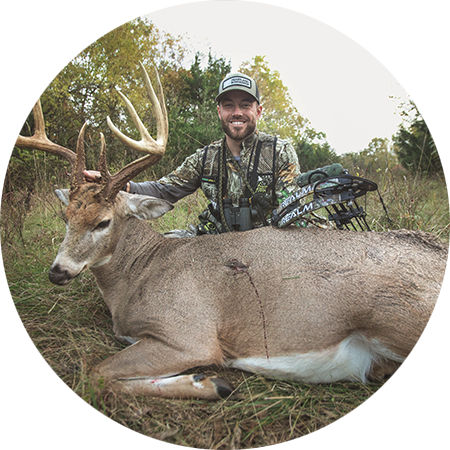
Heartland Bowhunter’s Shawn Luchtel
“With the majority of my hang and hunts occurring during the rut, that is when I key in on travel corridors the most. If it is private, I will key on bedding. If on public land, I first evaluate pressure, then I will focus on where other hunters are not. I almost try to “hunt” the hunters, meaning I want to find those certain areas that other hunters are missing. Using onX Hunt allows me to key in on access points, both the obvious ones and, more importantly, the subtle ones.”
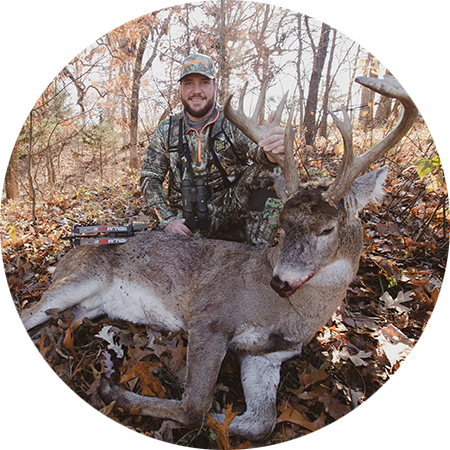
Heartland Bowhunter’s Michael Hunsucker
”Hang and hunts can be effective any time of year, especially on a new piece of property that you have never stepped foot on or maybe just an area of a property that you haven’t spent a lot of time hunting. One of my favorite times to hunt mature bucks is during the early season. The deer are very pattern-able and have been generally undisturbed by hunting pressure for months. When I think of early season in the Midwest, I think soybeans, and utilizing the Hunt App’s Crop Data Layers is a great way to identify fields that are planted in soybeans if you are hunting an area in which you haven’t been able to put boots on the ground. Once I identify fields that are planted in beans, that’s where I will focus my early season efforts. Ideally, I like to gather more intel through trail cameras and glassing that field to get a better understanding of the deer movement and where they tend to enter and exit the field. During the early season, you often only get one chance, so I like to start from an observation point and then work my way in based on movement and conditions while not being overly aggressive out of the gate. I may start by hanging a stand in a good vantage point and then eventually move closer to an area where I can intercept the deer coming into the beans. Without intruding to pick a tree, I will typically scout the area with the Desktop App to try and identify at least the general vicinity I want to be in, utilizing the Line Distance Tool to make sure I can get to a spot where I think I will have a shot opportunity. Once I have that spot identified, If I am able to, I will likely wait for a front or change in weather pattern to slip in and capitalize on the opportunity.”
Question:
Do you hang and hunt on public, private, or both? If private, how cautious are you when it comes to moving into a mature buck’s bedroom? What changes to get you to go in there?

Wired to Hunt’s Tony Peterson
“I hang and hunt on almost all of my hunts, both private and public. I think being comfortable with a mobile strategy is half of the game, it’s that important. On private, I’m not that cautious about moving into a buck’s bedroom. I’ve always been pretty cavalier about spooking deer because I grew up hunting places where other people could hunt. There was no option to wait for perfect conditions because by the time they rolled around, there might have been a bunch of other hunters in the woods in the best spots. This is one of the reasons I always try to find as many spots to hunt as possible, and I don’t really discriminate between public and private. I want good spots no matter who can hunt there, and I want a lot of them. If I have backup options with backup deer, I can take my mobile strategy anywhere and always be in the mix with good bucks. That’s a huge advantage over being married to one single spot and hoping that both the deer and the conditions conspire for a high odds hunt.”

Heartland Bowhunter’s Shawn Luchtel
“When hunting private, I will focus on being on the edge of bedding (on the downwind side) since mature bucks tend to cruise that downwind side in search of does. I like to make my disturbance of hanging the stand and trimming lanes on either a rainy day or windy day to avoid as much pressure as I can on the bedding area. Mornings seem to be the best when hunting these spots, so getting in early is often crucial.”

Midwest Whitetail’s Jared Mills
“I’ve done plenty of hang and hunts on both public and private land. In general, I don’t like to get into a mature buck’s bedroom but rather be just outside of it. In my experience, a mature buck is likely going to bed in a spot that is going to be hard for me to get into anyway (thick cover, sometimes swirly winds, good vantage point for him, etc). That’s why they pick those spots. But I do like to push as close as possible when the time of year is right, especially late October and into the first few days of November. If I can figure out a likely direction and travel route he is going to use after leaving his bed, either through trail cam or observation, that is where I want to be. And the closer I can get without blowing him out, the more likely it is to be a daylight encounter.”
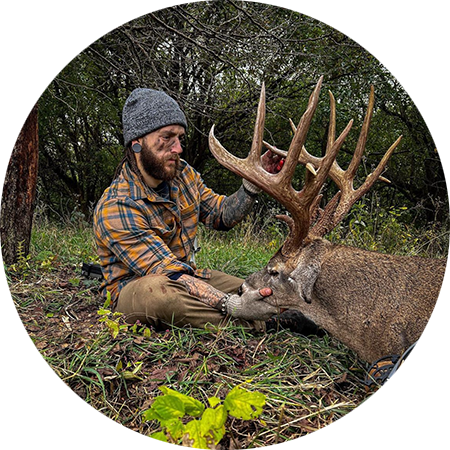
Lone Wolf Custom Gear’s Cody D’Aquisto
“I hunt both public and private lands from small parcels to vast remote tracts of timber. To me, it doesn’t matter so much the size, location, or pressure of a piece of ground. Instead, I care about what the piece has to offer regarding a mature whitetail. Many factors play into how aggressive I will be with bedding areas on private lands, but generally I am not cautious. If I can capitalize on an ambush point outside the core bedding area and avoid excess pressure, I will. I firmly believe that a mature buck beds where he beds for a reason, and as long as you don’t repeatedly harass him or get caught during an ambush, he will be back. The trick to successfully harvesting whitetails in and around their core area is precision. You need to read the area and know exactly where your point of access is and where you will be able to beat him before he beats you, because 98 percent of the time, you only get one opportunity.”
Question:
On public land, what are you looking for to give you the confidence to go into a new area via the Hunt App or boots on the ground? What is hot sign, and how can you distinguish it from cold sign?

The Hunting Public’s Aaron Warbritton
“We look for back corners, spots close to the road that people drive by, areas with steep terrain where people have to exert themselves, deep water—basically anything that deters human access. On a broader level, we’re targeting areas where people won’t think to go. Some of our best spots are on tiny public pieces with only one access point. We’ll monitor them throughout the season, and if nobody is parked there for several days in a row, it’s time to hunt. Most folks will flock to the largest public areas with the most deer.
“HOT sign is hard to generalize, so i’ll give an example, but we cover this in-depth in Deer School. Say it just rained the day before and you’re walking through a sandy creek bottom next to a long edge of thick cover. There are many deer trails coming out of the cover and crossing through the bottom. Then, you stumble upon a huge set of walking deer tracks in the wet sand coming down one of the trails and see a scrape nearby that’s got fresh dig marks in it that were obviously made since the last rain 24 hours ago. This is HOT sign and the type of stuff we’d pay very close attention to. We might even set up right over it.
“Now here’s an example of COLD sign. You’re scouting oak ridges during mid October. There are some acorns, and you’re finding rubs dotted across the woods. Then you find an area of open woods where there are dozens of rubs. Most of them appear to have been made this year. Upon further investigation, you realize the sap is dried on the rubs and droppings nearby are not moist—they are dry and crumbling when you step on them. This is COLD sign. Bucks likely shed their velvet in early September. In this situation, these rubs were left shortly after the velvet shed while the bucks were hammering these fresh acorns. Two weeks later, this sign is cold and the deer have moved to a different area.”
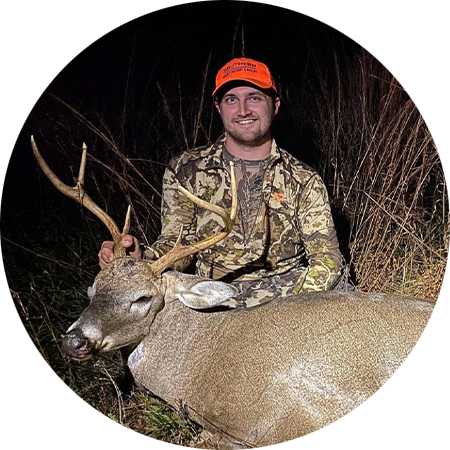
The Southern Outdoorsmen’s Andrew Maxwell
“As simple as it sounds, one of the main things that immediately increases my confidence in a new area is fresh tracks, especially big wide tracks. Lots of attention gets put on rubs and scrapes because let’s face it, who doesn’t get all fired up when you find a huge tree just shredded up? While I love finding any kind of buck sign, I have found that nothing gives me super fresh, accurate intel like a fresh track. This is especially true after rain storms, heavy dew, or heavy frost. Tracks degrade so quickly that finding a clean crisp track is the perfect indicator that the buck was just here. I find that tracks leave little room for error when it comes to determining how fresh they are, and when it comes to finding a super fresh track, you will know it when you see it. Now pair up some fresh tracks with some super fresh rubs and scrapes, and you are in great shape.”

The Element’s KC Smith
“Nothing gives me more confidence on public land than knowing there is a shooter buck in the area. It seems obvious, but if I can get eyes on a deer or a hot tip from a buddy as to a buck’s location, I feel way better about making moves to get on that buck and getting him shot within the next few days. There’s no hotter sign than a visual, so putting miles on the rig, finding vantage points to glass, and putting miles on the boots are my go to strategies.”
Question:
How do trail cameras play into your hang and hunts? Are you using cell cams to get the latest intel? Lots of observation sits before moving in? Going in blind and scouting and hunting?
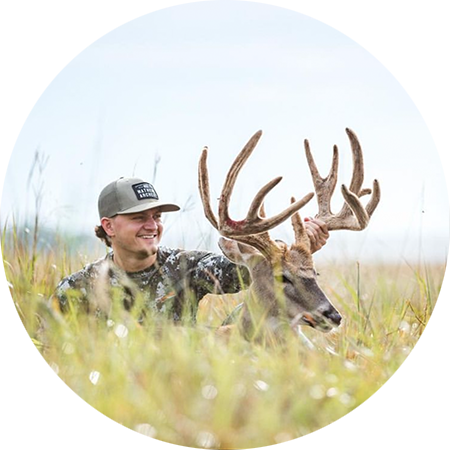
The 90:10 Project’s Brad Bever
“I would say 65% of my hunts are hang and hunts. Most of those hunts are observation sits, trying to find a bucks core area and get him patterned.
“Observation sits are important not only for intel, but for practicing the actual act of hanging and hunting. Usually you’re going in blind, so practicing picking out trees or making not-so-perfect trees huntable is key. Being quick and quiet can be the difference maker, especially when you decide to go in tight on a buck, so those observation sits are a perfect opportunity to practice your hang time and get to know your equipment.
“The most critical time to hang and hunt for me is when I have a buck mostly patterned with cellular trail cameras and I’m ready to dive into his core. I like to try and get him patterned before the rut kicks in, because once he starts searching for does, he can be very hard to pin down. That first time in is the most deadly, so I try to stay back, make a game plan, and dive in when the time and weather is in my favor.
“Overall, hanging and hunting is my favorite way to hunt whitetails. The first time into an area is by far your best chance at success, so taking advantage of that element of surprise can be deadly. Practice, have good equipment, stay quiet, and it can really pay off. Slow is smooth, smooth is fast.”

Have Bow, Will Travel’s Tanner Edenfield
“In the South, I’ve had much better luck using cameras to locate deer, but in the Midwest I find observation sits to be more beneficial. This past year in Kansas, I wasn’t seeing much activity in the afternoons, so I decided to take an afternoon and sit where I could see a roughly 100 acre field. Right at dark, I saw several deer come through around the middle of the field along a weed line that ran through it. The next afternoon, I eased up a tree on the edge of the field and ended up killing a nice 8 point. Without that observation sit, there’s no way I’d have ever hunted that spot.”

The Element’s KC Smith
“We like to use the term “Knowledgeably Aggressive” when doing hang and hunts (which we do 90% of the time). Cell cams like our Moultries are a huge benefit when applying the ‘knowledge’ portion of this tactic to places we have been before. The ability to accumulate deer data without having to intrude really gives you confidence to make aggressive moves when need be. When it’s time to strike, you may as well go all in. Things are different in a new location, and it all depends on a multitude of variables. Some of the ones we like to calculate for and observe are wind direction, direction of deer travel in the morning vs evening, crop locations and rotation, hunter access and pressure, as well as many others that may come up locationally. The thicker the cover/habitat, the more ‘guess and check’ we have to do, but I try to never hunt a “observation sit.” I always want to feel like I’m somewhat putting myself in a position to shoot a buck. We also have to factor how many days we have to hunt into how aggressive we can be.”
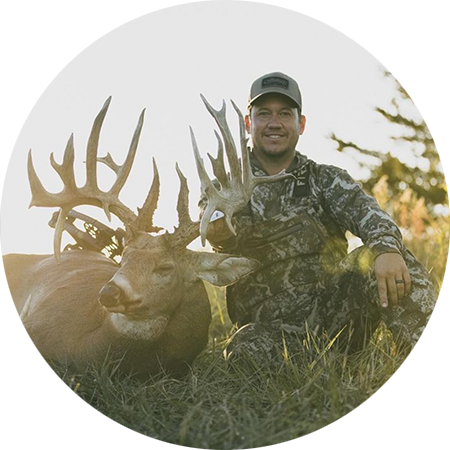
The 90:10 Project’s Aaron Sligh
“I’ve become too dependent on trail cameras, to the point if it’s not on camera it doesn’t exist. The main reason I use cell cams is to reduce my intrusion. I will tell you I am more of an observation hunter, always at the outside of a plot and not on a plot or on top of a hill watching a pinch point instead of being in that pinch, which allows me to gather as much and as precise of intel on a particular buck as possible. When I gather all the information and make an educated decision, I’ll pack up my stand and sticks and go into areas that make your skin crawl. Do this sparingly, but don’t let the season go by and say, “I wish I would have made that move.” It doesn’t have to be the magical point of the rut or the late season cut corn. If you pattern your target deer then go after him before it’s too late, hang and hunts are the perfect way to do it.”
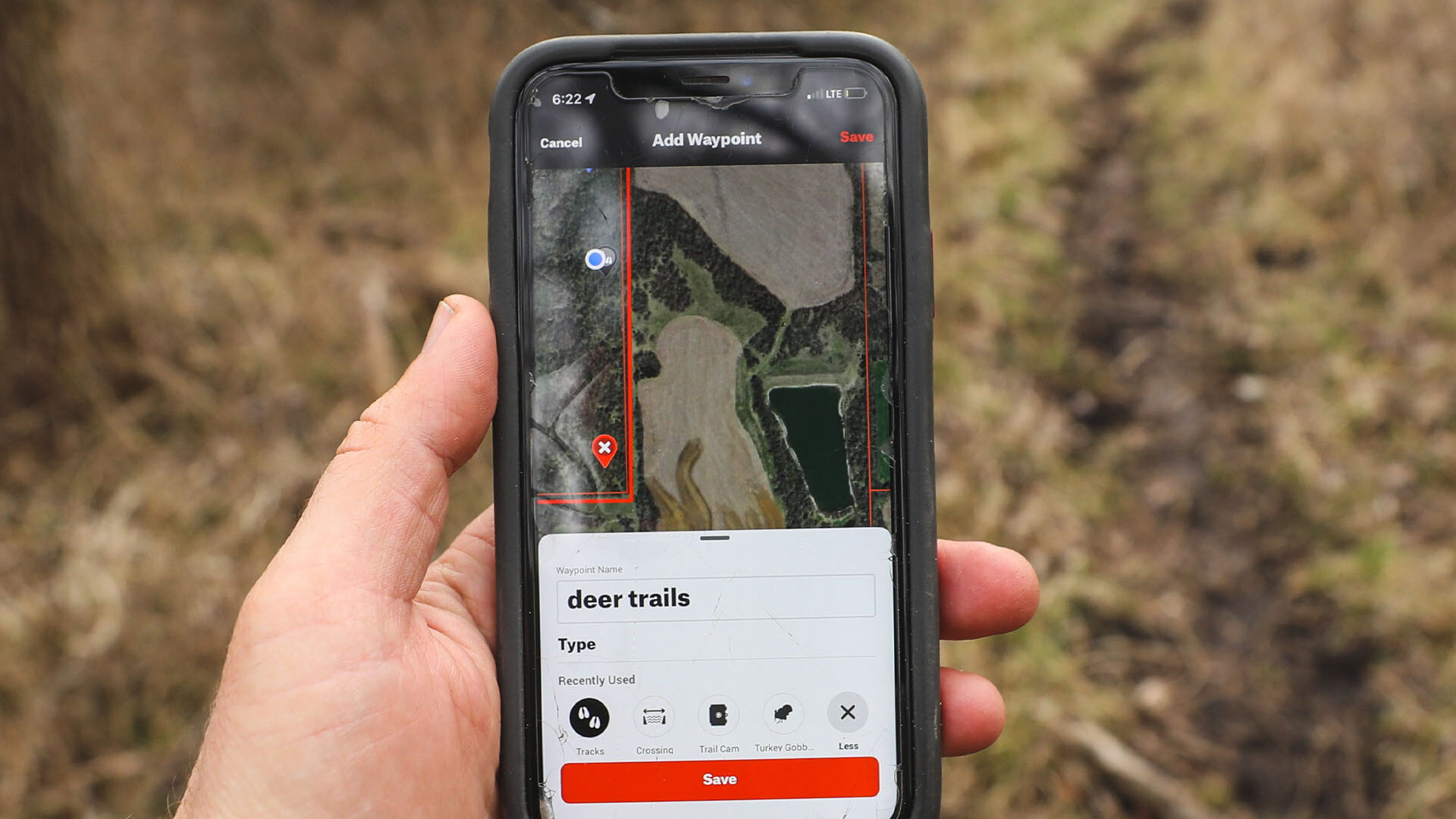
Take to the Woods With Confidence
If you’ve never done a hang and hunt, the time is now. With the insight shared here, apply these tips and tactics to your own scenario and go mobile. It adds an entirely new element to the whitetail hunting experience. If you’ve been hanging and hunting, hopefully you gained some hard-won knowledge from some of the most efficient whitetail hunters in the country.